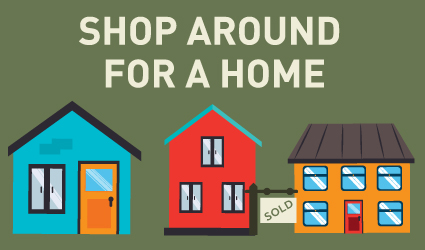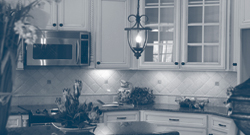Home Building Cost Saving Tips
Home Building Cost Saving Tips: Building a Home on a Budget
At first, building a custom home can seem out of reach to most people. Many people assume that custom homes are too expensive for them, and instead choose to remodel. But don’t give up too quickly on your dream home. With planning and hard work, it’s possible to build your dream home on a budget.
There are many ways to save money when building a new house. For instance, you can shop around for builders and lenders. If you’re handy, you can do some of the work yourself.
You can also look for builders who have streamlined their building process. SDL Custom Homes offers you flexibility and efficiency in the building process with our in-house design team. Our team uses 3D modeling to review building plans before construction starts.
You’ll find a number of tips here to help you save money while building your dream house. We’ve included questions you should ask yourself and your builder at each stage of the construction process. Read on to find more cost saving tips for building your dream house!
1. Figure Out What’s Important to You
With a custom build, you can create the perfect home for you. You can cut costs when building a home by avoiding features you’ll never use. Focus on what you need instead!
Ask yourself these questions to get started:
- What rooms do you use regularly?
- How much storage space do you need?
- How large does your home need to be?
- Are your family’s needs likely to change soon?
If your family never eats in the dining room, consider a floor plan with an open kitchen instead. Is your family likely to grow soon? Adding an unfinished basement or bonus room above the garage might be a great idea.
Think about design elements as well. You may be able to cut costs when building a house by choosing a simpler roofline or a different trim style. By deciding whether these are important to you early, you can cut down on costly delays during the building process.
2. Shop Around for a Builder
Your builder is one of the best allies when building a house on a budget. That’s why you should shop around! Let your builder know that you’re building on a budget, and talk to them about how you can save money while building a new house.
Touring other homes is one of the best ways to learn about a builder. Ask whether you can tour a model home or customer home. Tours are one of the best ways to get a sense of a builder’s craftsmanship.
You can streamline the construction process by looking for builders who’ve designed similar homes in the past. Do you have your heart set on a Cape Cod home? Look for a builder who’s built other homes in this style. They’ll know the challenges of designing and building in a particular style. That knowledge can help you speed up construction and avoid costly errors!
3. Compare Building and Construction Loans
Most homeowners are familiar with traditional mortgages. If you’re designing and building your home, finding financing can be very different. Find out about lot, land and construction loans, and shop around to save money.
Lot, land and construction loans are very different from traditional mortgages. The term of the loan is usually shorter. They also usually have higher interest rates. You may need to replace your construction loan with a mortgage once building is complete.
Here’s a quick review of the various loans you’ll want to consider:
- Lot or land loans: These loans can help you buy a site when you’re not yet ready to build. They’re usually shorter term, with higher down payments and interest rates.
- Construction loan: You’ll need to have a builder and a design to get a construction loan. They’re short term loans funded in advance that can help you pay for construction costs. They’re sometimes called story loans, because you’ll need to be able to describe your building plans. Your builder can help you do this.
- All-in-one construction loans: These loans are also called construction-to-permanent loans. Once building is complete, the construction loan rolls over into a regular mortgage. These can help you save money because you’ll only need to pay fees and closing costs once.
4. Consider a Pre-Designed Home
Building a home doesn’t need to start from scratch. Customizing a pre-designed home can be one of the most affordable ways to design and build a house.
Streamlined options like pre-designed houses can help you save money when building a new house. If you buy a pre-designed home, most of your blueprints will be already be complete. This can help you move into the building phase faster.
Pre-designed homes don’t mean cookie-cutter homes. You can customize your home with different finishes, cabinetry, and trim options. If you’d like more flexibility, you can add bonus rooms, extra bedrooms, or larger patios. Flexibility is important at SDL Custom Homes, so we encourage customers to customize their designs.
SDL Custom Homes offers pre-designed plans for a variety of Pennsylvania’s most popular styles. We offer ranch house, Cape Cod, Two Story and Mountain home styles. They range from 600 square feet to over 3,000 square feet. You can see some of the many ways that owners have customized their homes in our Gallery of Homes.
5. Communicate With Your Builder
We can’t emphasize enough how important communication is! Here at SDL, we encourage homeowners to talk to us from the very beginning. If there are design features you’d love to have, let us know early. It’s much easier — and less expensive — to change layouts during the design phase. Changes during the building process are usually more expensive.
Talk to your builder about your desire to save money while building your home, too. They may have ideas that can help you do this. For instance, SDL’s sweat equity program is a way for owners to build equity in their home by working on their house.
6. Use Software to Model Your Home
Technology has many benefits for custom designed homes. It’s no surprise that one of our favorite cost-saving tips involves 3D modeling software.
SDL’s in-house design team uses 3D software to give you the chance to walk through your new home. You can see what you like and what you don’t. You won’t waste time or materials if you decide to move windows or doors. If you’re not sure about a feature, modeling software can help you design.
7. Choose the Right Floor Plan
Some architectural features are more expensive than others. Roofs with gables are usually more expensive than simple pitched or hipped roofs, for example. They need more materials and take longer to build. You can often save money by choosing a simpler profile.
You can reduce costs in other ways, as well. For instance, you can use a shared plumbing run when installing bathrooms. Here, two bathrooms are built back to back. Because they share plumbing, you’ll reduce materials and labor.
Varied ceiling heights throughout a house are another expensive design element. Stick to a standard ceiling height. If you love the look of high ceilings but not the cost, let the designer know early. They may be able to design a truss system for tray ceilings. These are an affordable way to give you extra ceiling height in some rooms.
8. Consider Your Topographic Placement
Topographic placement is especially important if you are building on vacant land. If you’re lucky enough to be starting the building process with an empty lot, take some time to check out the topography. You may be able to reduce the cost of utility hookups and pouring the foundation.
The right topographic placement can also help you incorporate green design features. Once you move in, you’ll save money with lower heating and air conditioning bills. If you’re interested in adding a solar energy system, picking the right site for your house is essential.
9. Stay Organized
Staying organized is one of the best tools for building a home on a budget. You’ll need to have your paperwork organized to get the best mortgage and construction loans. If you’re responsible for permits or inspections, you’ll need to know when to complete them.
Many people forget that idle time during construction is expensive. Staying on top of what needs to be done will cut down on idle time! A good builder can help you figure out project timelines and who’s responsible for each step.
Staying organized can help while you’re sourcing materials, too. You might need to order supplies two or three weeks in advance. Find out when you’ll need to have any supplies you source on the job site.
10. Shop Around for Materials
Some builders, like SDL, allow owners to source their own materials to reduce the cost of supplies. Talk to your builder about what you can source yourself.
Reusing materials or finding secondhand items can save you money, but with some materials, it’s better to purchase new. Think water heaters, air conditioners and insulation. Newer models will last longer and be more energy efficient, saving you money down the road. You can save money on these items by shopping at wholesalers or discounters. Keep an eye out for sales at local hardware and appliance stores.
11. Take Advantage of Your Builder’s Discount
Ask your builder whether they have a discount you can use when purchasing supplies. Builders can often get materials at wholesale or discounted prices. If you’re buying construction supplies for your home, you may be able to use their builder’s discount.
12. Do it Yourself
One of the best and most affordable ways to build a house is to do some of it yourself. Think about what you can do — and what you’re willing to do — during the building process. Some builders work with the homeowners to have the homeowners do part of the work in exchange for a lower price.
If you’re interested in building sweat equity in your home, make sure you ask a builder up front whether they allow this. If you’re handy and want to cut costs, consider installing your own tile or light fixtures, or painting your home yourself.
Before you begin, make sure everyone’s on the page with what you’ll do. If you’re building some sweat equity by painting, does that mean interiors only? Will you also paint the exterior?
13. Find Out if You Qualify for Energy Efficiency Rebates
Energy efficiency rebates are a good way to reduce the cost of installing energy efficient equipment in your new home. You can receive a federal tax credit for many Energy Star appliances and solar energy systems. You can find out about the most updated list of federal tax credits on the Energy Star website.
Your state, city and utility companies may also offer rebates and tax credits. Some cities offer tax credits for installing energy efficient windows or air conditioners. Utility companies may offer rebates for purchasing an Energy Star washing machine or air-sealing your home. These rebates can make energy efficient additions very cost effective. As a bonus, you’ll also have lower utility bills down the road.
14. Choose Efficient, Quality Appliances
Energy efficient appliances may cost more up front, but you’ll save in the long run. Lower utility bills will offset the higher purchase price.
To find energy efficient appliances, look for an Energy Star or similar logo. You’ll also want to consider the pros and cons of appliances that run on natural gas or electricity to determine what works best for you.
Paying more for energy efficiency may make more sense for some appliances than for others. Water heaters are the third largest electricity expense in most homes. An energy efficient water heater will make a big difference to your utility bills! Central heating and air conditioning also use a lot of energy, so might be good choices for energy efficient equipment.
If you want to cut costs up front, try to buy appliances at a discount store or with your builder’s discount. Connecticut and California both offer rebates on Energy Star appliances. If you’re in Maryland, you may not need to pay sales tax on them. Check with your utility company to see if they’ll offer rebates, too.
Building a house can be a big undertaking, so it’s important to work with a builder who shares your vision. If you’re looking for a custom or pre-priced builder to work with you on your home, contact SDL Homes for more information.






